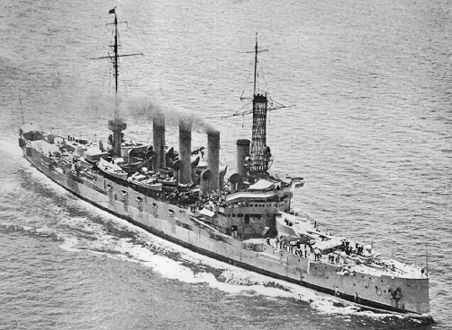|
In the case of the USN, the development of smokeless powder led to a new generation of long-barrel naval guns, including the 10"/40 (25.4 cm) Mark 3. This weapon was one of the post Spanish-American War high-powered guns and armed the USN's last generation of armored cruisers. This was the last 10" (25.4 cm) gun built for the US Navy. In 1908 AP projectiles were fitted with a longer ballistic cap of 7crh which improved their penetration ability at longer ranges. Consisted of A tube, jacket, four hoops, locking ring and a screw box liner, all manufactured from nickel-steel. |

USS Washington ACR-11
|
| .
|